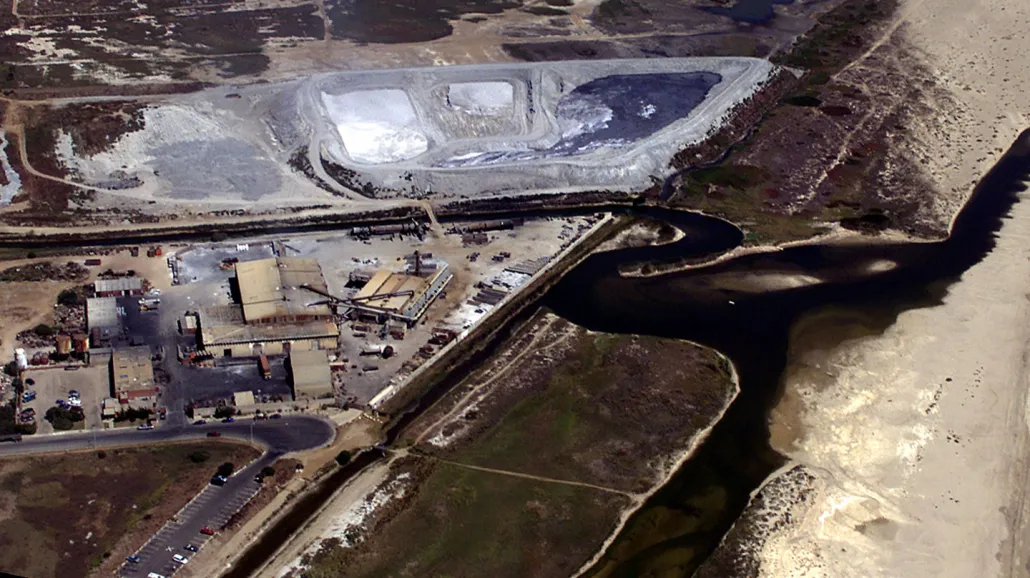Rising groundwater threatens to spread toxic pollution on U.S. coastlines
By 2100, sea level rise could push groundwater into hundreds of Superfund sites

The Halaco Engineering Company site in Oxnard, Calif., is one of hundreds of Superfund sites on U.S. coastlines where rising groundwater could spread pollution to nearby communities.
Steve Osman/Los Angeles Times via Getty Images
Hidden flows of water are poised to flush toxic contamination into U.S. coastal communities.
Sea level rise from climate change won’t just force shorelines to retreat — in inland areas, it will guilefully lift groundwater into shallower soils. That rising water could infiltrate hundreds of U.S. Superfund sites — severely polluted locations identified by the Environmental Protection Agency for cleanup — researchers warn in a preliminary study posted May 25 to ESS Open Archive.
These sites — and thousands of other polluted areas — could be at risk of releasing heavy metals, radioactive elements, pesticides and industrial chemicals associated with human health problems (SN: 4/26/23). People of color and low-income communities would be disproportionately affected.
“Just the sheer number of Superfund sites where there are these dangerous contaminants that could be liberated — it’s astonishing,” says coastal geologist Patrick Barnard of the U.S. Geological Survey in Santa Cruz, Calif., who wasn’t involved in the study. Many of the polluted areas have been managed without regard for groundwater rise, he says. “We need to think about what the future holds for these sites.”
The link between climate change, the sea and underground water may not be obvious, but it is intimate. At the beach, seawater can seep into the ground and move inland, permeating layers of earth under coastal communities. Meanwhile, rain and runoff can also trickle down from above. In the ground, this freshwater often sits atop the denser saltwater from the sea. And when the sea level rises due to climate change, it pushes all this groundwater up through the earth (SN: 10/29/19).
As the top of the groundwater — the water table — nears the surface, it can damage human infrastructure. It can also spread hazardous substances in the soil, exposing people and ecosystems nearby.
Environmental planner and geologist Kristina Hill found motivation for the new study while investigating groundwater conditions at a former Superfund site in the San Francisco Bay Area. There, groundwater was touching pollutants in the soil. “I started wondering, what is the scale of this problem?” says Hill, of the University of California, Berkeley.
She and her colleagues identified which of the roughly 1,300 U.S. Superfund sites are in low-lying coastal areas — no more than 10 meters above mean sea level — where groundwater rise could potentially infiltrate.
They found if the sea surface rose by one meter — a possibility by 2100 — then groundwater could potentially rise into contaminated soils at 326 sites. New Jersey and Florida respectively contained the most at-risk Superfund sites — 54 and 51 respectively.
Not every polluted site in the United States is a Superfund site, but that doesn’t make them less hazardous, Hill says. Her team assessed that potential impact with a case study of the Bay Area alone. They flagged 12 Superfund sites and nearly 5,300 state-managed contaminated areas vulnerable to that one-meter sea level rise. There could be thousands more such sites up and down our coastlines, Hill says.
The researchers analyzed U.S. Census data to investigate who could face the greatest risk of exposure. People from socially vulnerable communities — those whose circumstances limit their ability to prevent suffering or loss in face of a disaster — bore disproportionate risk, they found.
“The findings are not surprising,” says hydrogeologist Holly Michael of the University of Delaware in Newark. This study takes the first step in addressing the hazard, by calling out where it could arise, she says. More local research will be needed to thoroughly assess each site’s risk and determine next steps, be that treating contaminated soils or removing them altogether.
As the ocean encroaches, Hill says, helping people move inland won’t be enough unless we also clean up our mess. “Otherwise, there will be a toxic area that we leave behind, and that will spread.”







